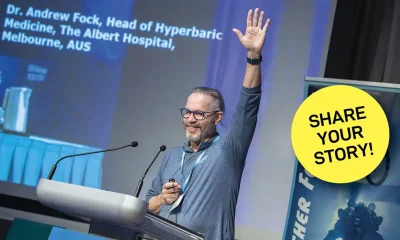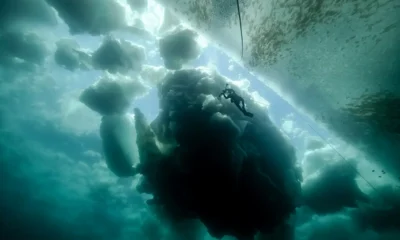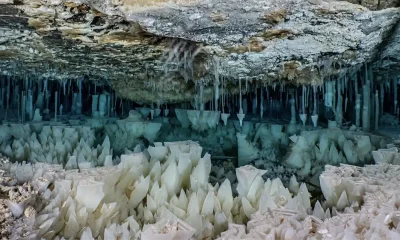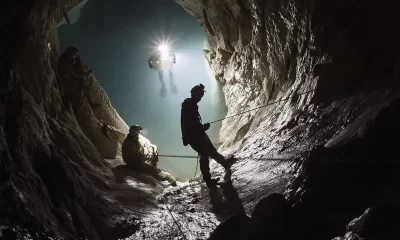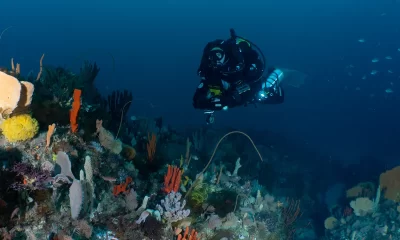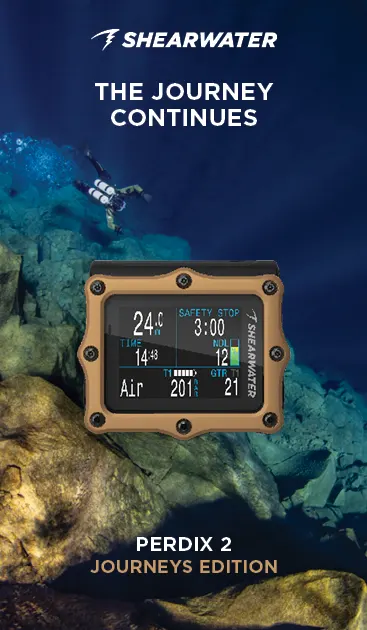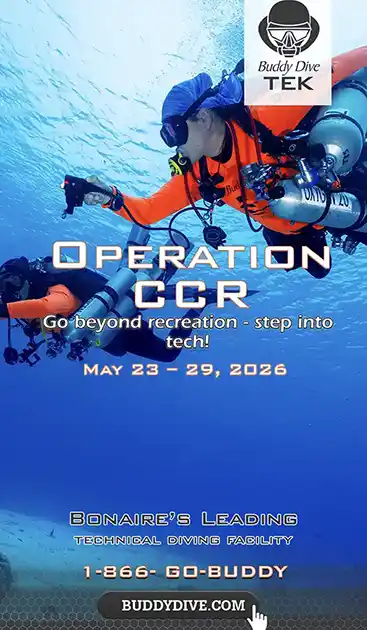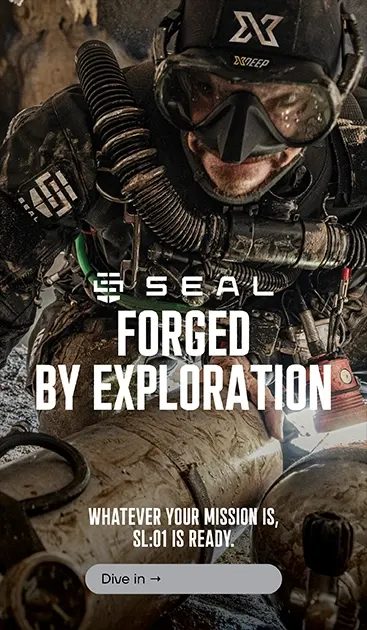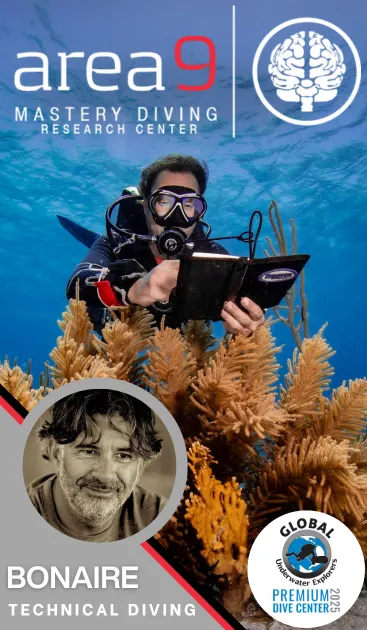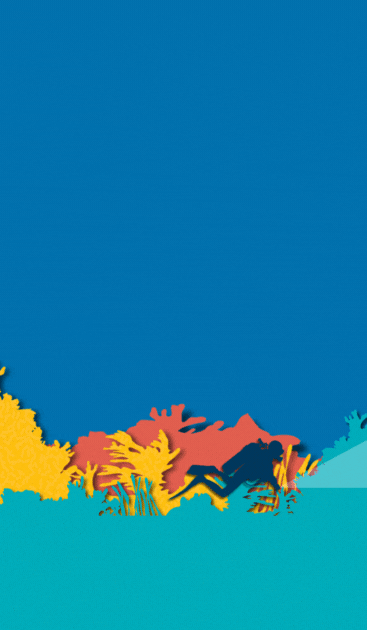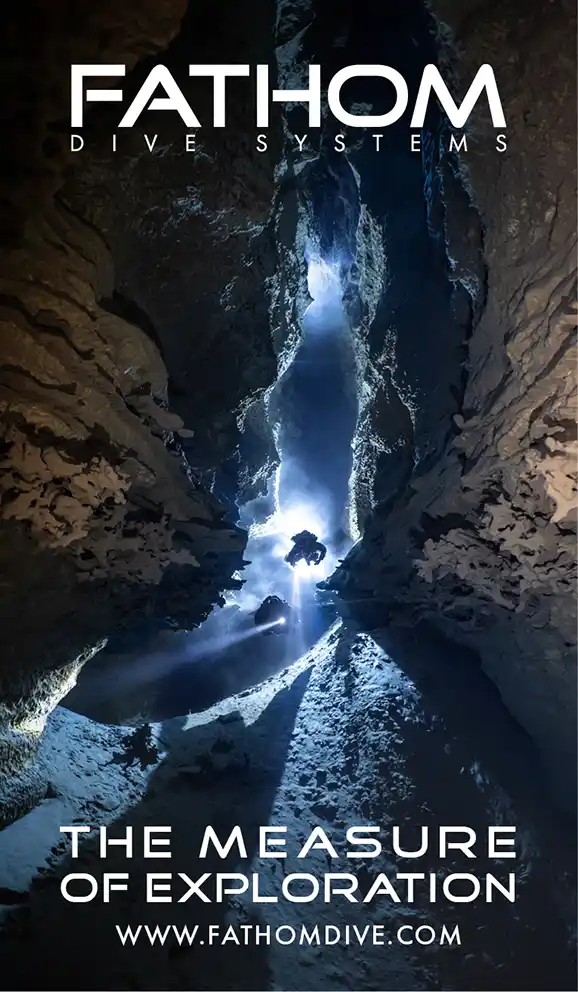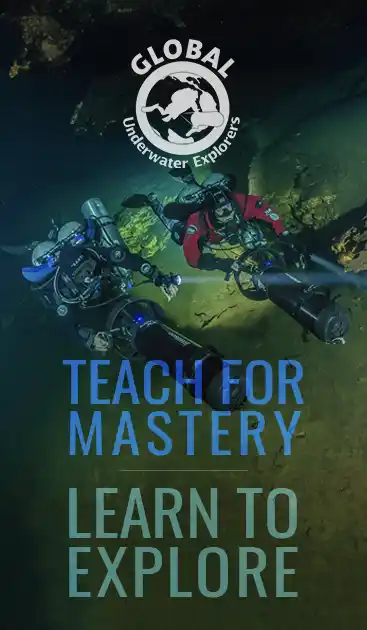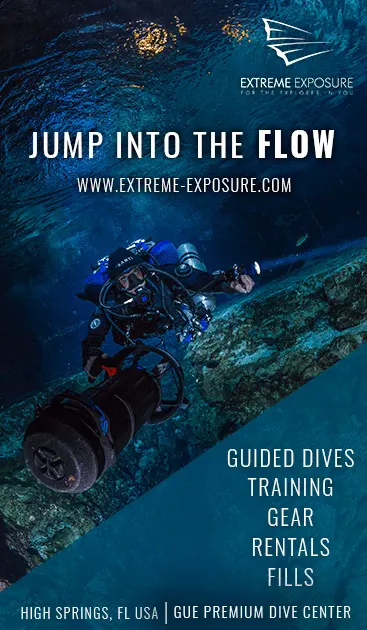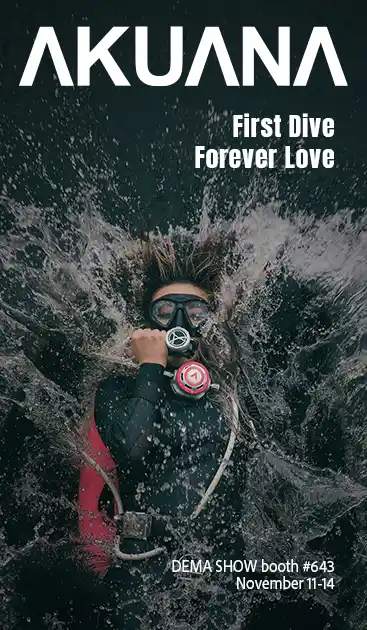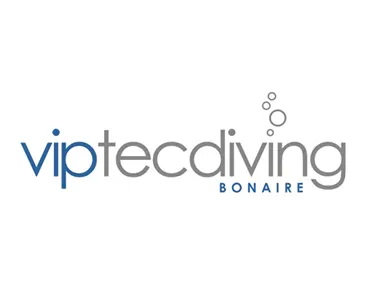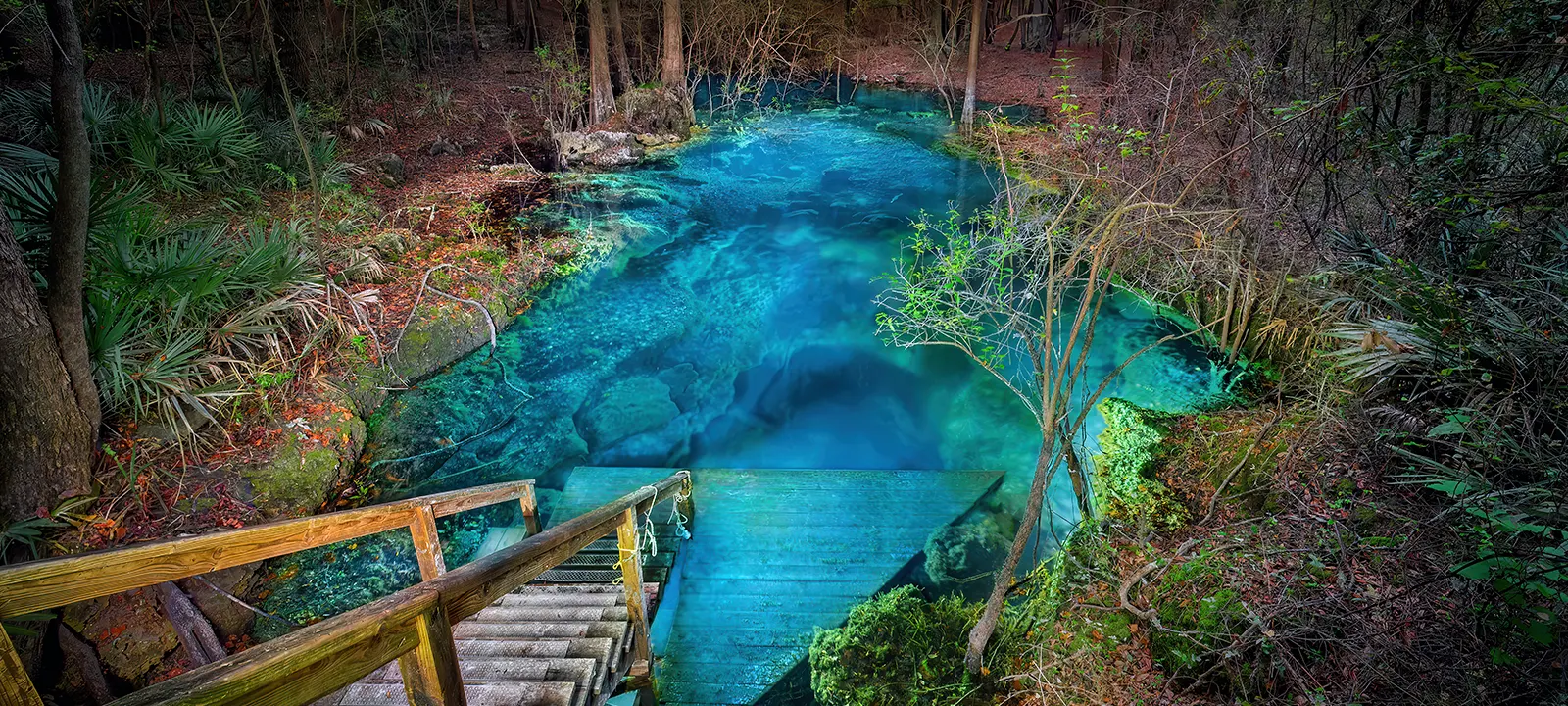
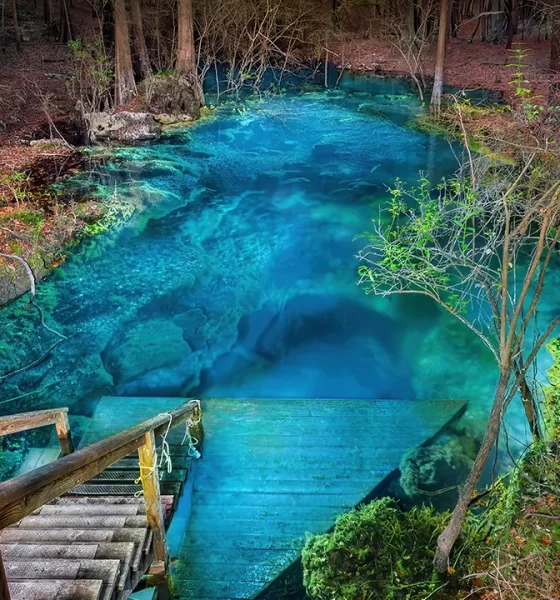
Art
Illuminated Springs
Veteran cave explorer Guy Bryant uses light to illuminate unique hidden structures of Florida’s Springs that have not been seen before.
Words and photos by Guy Bryant.
I first became interested in illuminating and photographing springs while cave diving at night. When divers exited the cave using their powerful lights, I always noticed how the spring or sinkhole basin would light up and appear to glow. This got me thinking about how swimming pools with underwater lights also looked beautiful at night. I imagined what it might look like to light up a spring basin with underwater video lights and photograph it at night.

I couldn’t get the idea out of my head. So, on March 29, 2019, I decided to try illuminating a spring basin. For my first try, I chose Madison Blue Sink in Madison County, Florida. The sinkhole is relatively unknown, making it ideal for night photography—there wouldn’t be anyone around to be in the photo as I figured out how to take the shot.
I took my scuba gear to the sinkhole with my partner Amy Sturkey just before dark. I brought three underwater video lights (which I had been using to make underwater cave diving videos) and placed them in different locations within the sink; I envisioned the clear water resembling an illuminated swimming pool. During our first effort, we had a problem: The video lights were leaving “hot” spots on the long 30-second exposures we were using. I had an idea: I could retrieve my video lights and swim around with my brightest 15,000-lumen light. Through some trial and error, I figured out how best to illuminate a spring or sinkhole at night.
When we returned home, I eagerly downloaded my images and stacked them in Photoshop into separate layers. I painstakingly went through each photo layer and revealed the parts of each photo I wanted to include in one dominant layer. I was so delighted with the resultant image that I set out to photograph as many springs and sinks as possible in Florida and southern Georgia.

After figuring out the best camera settings for the shots I had envisioned, I determined that I needed to arrive about one hour before sunset; this would give me enough time to set up my cameras in various places and get a multitude of angles of the spring or sinkhole.

Over time, I found the best camera settings are usually ISO 400, f/13, and aperture priority. Using aperture priority limits the camera to 30-second exposures as the sunlight fades into darkness. Unfortunately, long exposures pose the inherent problem of sharpness in the image. As the wind blows leaves and limbs around during the long 30-second exposures, this causes many images to have areas that are a little out of focus.I’ve found it best to autofocus the camera to have the shot in focus, then set the focus to manual so that the camera no longer has to autofocus for each photo. If my camera were capable, I could set it to automatically take images continuously until I turned it off. Without such capabilities, I had to manually press the shutter or use a remote to activate it after each shot. I use Fujifilm and Canon cameras for my photos. Fujifilm can be set to automatically take photos continuously until you stop the camera. With Canon cameras, I use a corded remote control and press the shutter button in the hold position so that the camera will continue to take shots after each 30-second exposure.

While the cameras are running, the camera operator(s) must also light paint the surrounding area or have a volunteer help with the light painting. At the same time, another person scuba dives or snorkels in the spring or sinkhole basin, shining a video light with sweeping side-to-side motions.
I usually take photos starting at sunset and ending between 30 to 45 minutes later. During this timeframe, I either get a good sunset sky or a cobalt blue dusk sky. This usually results in 32 to 90 separate images per camera.

The final step is to download all the images and load them into a stack of layers in Photoshop. I then review each layer and reveal the parts I want to keep into one final layer. This process averages about four hours per image but can sometimes take up to eight hours.

As I posted my images on the internet, people began to contact me and wanted to help me illuminate and photograph. I had initially done all the underwater lighting while Amy ran the cameras and light-painted. I decided to accept help, which turned out to be a great idea—with help, I could get the shots much more quickly.

As I posted more photos, I began to receive requests from private spring or sinkhole owners to photograph their sites. Many times, this meant that I got to explore some virgin or underexplored caves. That was definitely a win-win situation for me and the owners.

I received many messages from people wanting to buy my photos, so I uploaded them to my website so that people could order various print types and sizes. Sometimes I would sell the digital images so that clients could have them printed themselves.

Also, many people wanted to know if I had a book of my photos that they could buy. I had so many requests that I decided to make a coffee table book. That was an adventure itself. It was not hard to find a company willing to print the book. Still, I received prices to print and market the book ranging from $5,000 to $10,000. In many cases, if the books they printed didn’t sell, I would have to buy the unsold stock or any returns from bookstores—not to mention only receiving a dollar or two in royalties per sale. So, I decided to go the self-publishing route-see below.

How to Get Guy’s Book

After extensive research, I found a company that publishes quality, landscape-oriented coffee table books: Lulu.com. My spring book is now available as an 8.5 x 11 hardcover with #90 paper. for $40.99 plus tax & shipping. If you’re looking for a more affordable version of my book, it’s now available as an Amazon ebook (and in portrait orientation as a printed book). The highest quality version is an 11 x 13-inch print from Blurb. All future books in the series will be printed by Lulu and Blurb. Since Amazon doesn’t print landscape-oriented books, I will no longer offer portrait-oriented books on Amazon (except for the Volume 1 which is already listed there). My first book is also available on Amazon.
For a brief history of early light painting see: Light Painting Photography

Guy Bryant has been cave diving since he was 17 years old. Since then, he has amassed over 3,800 cave dives and explored and surveyed multiple cave systems, including Madison Blue, Lineater, Jackson Blue, Pot, and more. Guy is also an avid photographer, traveler, and outdoor enthusiast. He illuminates and photographs springs at night, capturing their natural beauty with long exposures. He has written two books, The Education of a Cave Diver and Illuminated Springs – Volume 1.
Social Media Links:
Facebook: https://www.facebook.com/guy.bryant/18
Instagram: https://www.instagram.com/guybryant75/
YouTube: https://www.youtube.com/c/guybryantcavediver
Photo website: http://www.guybryant.com


